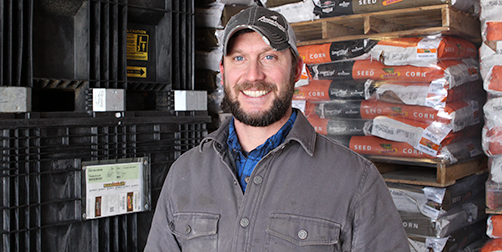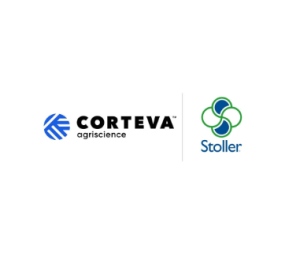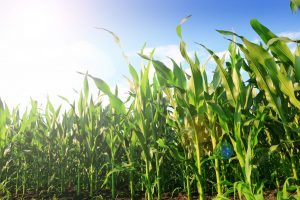Corn takes a backseat to soybeans on Joshua Rausch’s farm at planting.
The Paulina, Iowa, farmer is part of a growing trend of producers who plant soybeans before or at the same time as corn to maximize yields and profit potential, agronomy experts say. Research shows the earlier soybeans are seeded, the more opportunity plants have to harvest sunlight to produce more nodes, pods and ultimately bushels.
Soybeans are traditionally planted after corn nationwide, primarily due to risk. Corn costs more to plant and needs time to take advantage of higher-yielding, long-season hybrids. Soybeans are more forgiving than corn and have a better chance to produce a crop if planted well into June or July. Plus, a late-spring frost can kill soybean plants after emergence since the growing point is already out of the ground unlike corn.
Rausch used to plant corn first too, which meant soybeans usually got in by mid- to late-May. That changed when soybean yields plateaued a few years ago at 65 to 75 bushels per acre (bpa).
“Some people would be happy with that … we’re not,” Rausch explains. “We have to continue to increase yield to reduce costs. You can’t keep doing the same thing and expect more.”
The grain and cattle farmer researched ways to increase soybean production, and early planting hit home. A recent University of Illinois report says, “results from soybean planting research for different years and different locations vary throughout the U.S., but the evidence indicates planting on or before May 1 generally is associated with higher yields.”
Why? Most soybeans planted in the U.S are an indeterminate crop and photoperiod sensitive. The longer plants absorb sunlight, that spurs vegetative growth and flowering during the reproductive period. More flowers mean more nodes, which means more pods and soybeans.
FIELD TEST
Rausch tested the concept several years ago, planting half of a soybean field before corn in late April and the rest of the beans in mid-May after corn. Flowers showed up in the early-planted soybeans about 10 days before the later-planted fields, which produced more pods and soybeans.
“I conservatively got 5 bushels more planting early and it cost me zero,” Rausch says. “It’s like 5 free bushels.”
He tried it again the following year with half his soybean acres getting a two-week jumpstart with the same result. This year, all of the family’s 500 acres of soybeans were planted in late April before corn.
Rausch shares he initially got plenty of odd looks and questions from neighboring farmers when he seeded soybeans as they planted corn. But that dissipated as he shared the results “I heard ‘you guys are crazy,’ Rausch recalls. “It may sound crazy, but we are seeing big returns. We’ve seen a huge yield bump by doing nothing more than planting soybeans first … and it doesn’t affect our corn yields.”
Rausch said it would be nice to plant both crops at the same time, which many farmers do. But since they can’t justify buying a second planter at this time and help is limited, Rausch says planting soybeans first is the way to go.
At $9 per bushel, an extra 5 bpa equates to $45 per acre.
STRESS MANAGEMENT
To mitigate stress, disease and insect pressure on early-planted soybeans, Rausch started testing Stoller USA seed treatments and products. On those acres, he saw a 10-bushel yield bump, though it takes about 4 bushels to pay for the extra inputs.
Jeff Berkemeyer, Stoller district sales marketing representative for Missouri and western Iowa, recommends farmers use the company’s Bio-Forge Advance at the very least if planting soybeans early, which can be applied as a seed treatment or in-furrow.
“It helps mitigate stress from colder, wetter soils associated with early planting,” Berkemeyer says. “You get better, quicker emergence.”
GROWING TREND
More farmers in northwest Iowa are planting soybeans first or at the same time as corn, Rausch claims. Berkemeyer agrees.
“It’s a growing trend, especially after farmers see the results,” Rauch says.
The legume has seeding priority on Mark Muench’s row-crop operation near Ogden, Iowa.
After years of growing only corn, Muench started plantings soybeans again three years ago due to agronomic and economic reasons. On the advice of his agronomist, John McGillicuddy of Iowa City, Iowa, he planted one-third of his soybeans (300 acres) before corn on or about April 20 last year and the rest in mid-May. The early-planted beans yielded 10 bushels better.
“You hear about the yield potential, but when you see it with your own eyes in your own fields, it makes a believer out of you,” Muench says. “It didn’t cost us anything.”
All of Muench’s beans were planted before corn this year with the help from a neighbor. Soybean planting — half were drilled and half broadcast seeded and worked in using vertical tillage machine — started April 19 and wrapped up on May 4.
RISK FACTORS
Planting date does strongly influence soybean yields, but agronomists warn soil and weather conditions need to be right. Slow germination and compaction can negate the benefits of getting soy in early.
A University of Illinois soy and corn planting date study from 2007 to 2018 reveals soybeans can reach almost 100% of its yield potential if planted by April 10. Percentage losses increase with time: 1.8% on April 20, 3.9% on April 30, 7% on May 10 and 15.8% on May 30.
Corn yield losses are less pronounced percentage wise the later it goes into the ground. A 100% of yield potential is possible if planted by April 20. On April 30, the yield loss is 1.3%, May 10 is 4.2% and May 30 is 13.4%.
McGillicuddy promotes the yield and revenue benefits of planting soybeans early, but points of the risks.
“You don’t want to rush soil conditions and mud them in on April 15,” he adds. “One thing I try to promote is don’t push two variables. If soil is cold (below 50 degrees), don’t plant if it’s also wet. Don’t make the plant deal with two problems.”
Planting soybeans early, even before corn, is becoming more popular, McGillicuddy says.
“I think farmers are more analytical and less traditional,” he explains. “They understand anything that was considered tried and true ag production can go out the window.”





